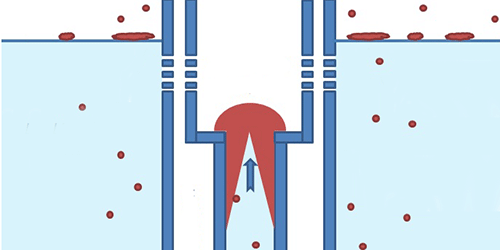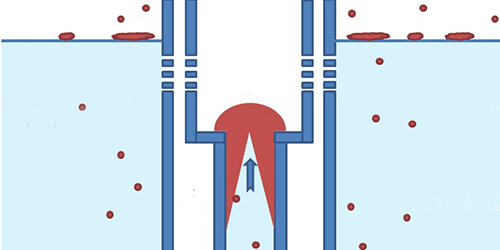Get the Hydrogen Out
Liquid helium is the unsung partner in numerous low-temperature experiments. Unfortunately, the cryogen is expensive. So to preserve it, a growing number of labs have liquefiers, which collect evaporated helium and cool it back into liquid. Conrado Rillo, of the University of Zaragoza, Spain, and the Spanish National Research Council, and his colleagues have now developed a “clean helium” recipe for liquifiers that should prevent a costly problem for cryogenic experiments: blockages caused by solidified hydrogen molecules.
For certain low-temperature applications, researchers need a cryogen that’s colder than standard liquid helium (4.2 K). Pushing helium through a narrow capillary such that it cools upon expanding at the exit can chill the liquid to 3 K and below. But at these temperatures, molecular hydrogen ( )—a common impurity in helium that is tough to remove—almost completely solidifies. Rillo and his co-workers thought that collecting on the capillary walls might explain numerous reported failures in cryogenic experiments. To test their hypothesis, they pumped helium through a pinched capillary. Within 10 hours the thin tube had a clog, which only cleared when the tube was warmed above ’s melting point.
The researchers estimate that, to prevent blockages, the concentration has to be roughly ten million times lower than that of commercial grade helium. To reach this purity, they propose a two-step solution: a pre-freeze that condenses out the (and other impurities) and the use of a getter purifier, which absorbs the remaining . They produced this clean helium at the University of Zaragoza’s helium liquefaction plant, and using it kept their cryogenic instruments blockage-free for more than a year.
This research is published in Physical Review Applied.
–Jessica Thomas
Jessica Thomas is the Editor of Physics.





